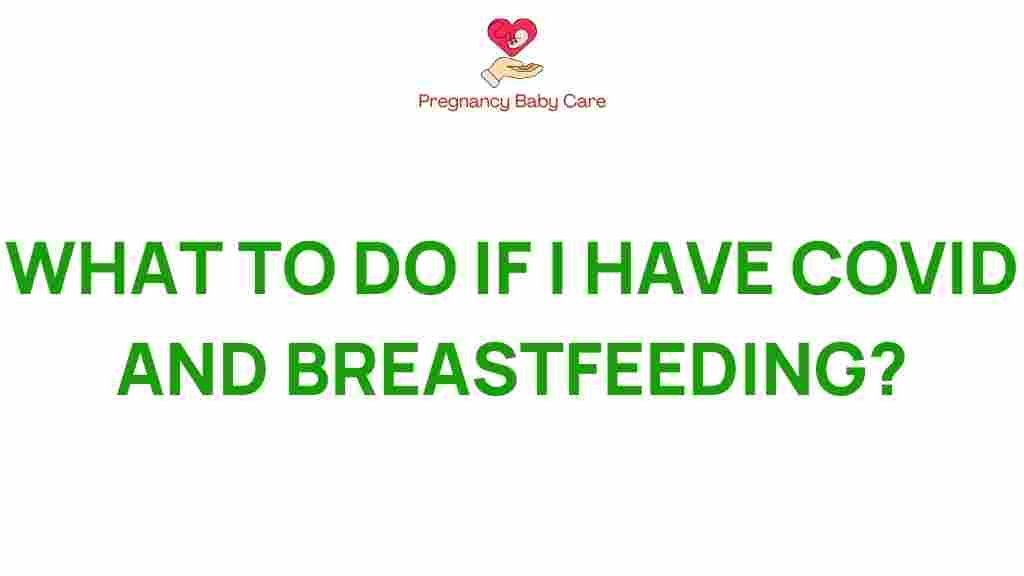The COVID-19 pandemic has transformed the landscape of maternal and infant care, leading many new mothers to seek guidance on breastfeeding during this unprecedented time. Understanding the interplay between COVID, breastfeeding, and health is crucial for both mothers and infants. This article provides essential guidelines to navigate breastfeeding safely during the ongoing pandemic, ensuring the well-being of both mother and child.
The Importance of Breastfeeding
Breastfeeding is widely recognized for its numerous health benefits for infants and mothers. It strengthens the infant’s immune response, provides essential nutrients, and fosters a unique bond between mother and child. During the COVID-19 pandemic, maintaining breastfeeding practices is vital, as it helps protect infants against infections and promotes overall health.
- Enhanced Immune Response: Breast milk contains antibodies and other components that help fight infections.
- Nutrition: Breast milk is perfectly tailored for an infant’s nutritional needs.
- Emotional Bonding: Breastfeeding promotes a sense of security and closeness.
Understanding COVID-19 and Breastfeeding
With the emergence of COVID-19, many mothers have concerns about the safety of breastfeeding. Research indicates that the virus is not transmitted through breast milk. However, it is essential to follow safety guidelines to minimize the risk of infection.
Essential Guidelines for Breastfeeding During COVID
To ensure both mother and infant are safe during breastfeeding in the context of COVID, consider the following guidelines:
- Practice Good Hygiene: Wash your hands thoroughly with soap and water for at least 20 seconds before touching your baby or breast pump. Use hand sanitizer if soap and water are not available.
- Wear a Mask: If you are sick or have COVID-19 symptoms, wear a mask while breastfeeding or when you are close to your baby.
- Avoid Close Contact if Infected: If you test positive for COVID-19, try to maintain a safe distance from your baby. Consider pumping breast milk and having a healthy caregiver feed the baby.
- Follow Local Guidelines: Stay updated with guidelines issued by health authorities regarding COVID-19 and breastfeeding.
Step-by-Step Process for Safe Breastfeeding
Here’s a step-by-step process to help you navigate breastfeeding during the COVID-19 pandemic:
Step 1: Prepare Your Environment
Ensure that your breastfeeding space is clean and free from any potential contaminants. Maintain a comfortable and safe area for feeding your infant.
Step 2: Prioritize Hygiene
Always wash your hands before and after breastfeeding, and clean any surfaces or items that may come into contact with your baby.
Step 3: Monitor Your Health
Be vigilant about any symptoms of COVID-19, such as fever, cough, or loss of taste and smell. If you experience symptoms, consult a healthcare professional immediately.
Step 4: Communicate with Your Healthcare Provider
Keep open lines of communication with your healthcare provider regarding your health status and any concerns about breastfeeding during COVID.
Step 5: Consider Pumping
If you are symptomatic or have tested positive for COVID-19, consider pumping your breast milk and having someone else feed your baby while you recover.
Troubleshooting Common Issues
While breastfeeding during COVID, you may encounter some challenges. Here are some common issues and how to address them:
Issue 1: Difficulty Establishing a Milk Supply
If you are having trouble with your milk supply, try the following:
- Ensure you are breastfeeding or pumping frequently.
- Stay hydrated and maintain a balanced diet.
- Consult a lactation consultant for support.
Issue 2: Stress and Anxiety
The pandemic can increase stress levels, which may affect breastfeeding. To combat this:
- Practice relaxation techniques such as deep breathing or meditation.
- Seek support from family, friends, or online communities.
Issue 3: Concerns About COVID-19 Transmission
If you are worried about transmitting the virus to your infant, remember that:
- Current research indicates that COVID-19 is not transmitted through breast milk.
- Following hygiene protocols significantly reduces the risk of transmission.
Building Your Infant’s Immune Response
Breastfeeding plays a critical role in building an infant’s immune response, especially during a pandemic. The antibodies present in breast milk help protect infants from various infections, including respiratory illnesses.
Here are some ways breastfeeding enhances your baby’s immune response:
- Antibodies: Breast milk contains immunoglobulins that help fight infections.
- Growth Factors: Nutrients in breast milk support the development of the gut, which is essential for a robust immune system.
- Customization: The composition of breast milk adapts to meet the changing needs of your infant, especially in response to illness.
Conclusion
Navigating breastfeeding during COVID is a challenge that many new mothers face. By adhering to the essential guidelines outlined above, you can ensure the health and safety of both yourself and your infant. Remember that breastfeeding not only provides vital nutrition but also strengthens your baby’s immune response during these trying times.
Stay informed, prioritize hygiene, and don’t hesitate to reach out for support from healthcare professionals, lactation consultants, or local resources. For more detailed information, you can visit [CDC’s Breastfeeding Guidelines](https://www.cdc.gov/breastfeeding/index.htm) here. Remember, you are not alone in this journey, and with the right support and knowledge, you can successfully navigate the challenges of breastfeeding during COVID.
For further reading on general infant care during the pandemic, check out our article on infant care tips during COVID-19.
This article is in the category Feeding and created by PregnancyBabyCare Team
